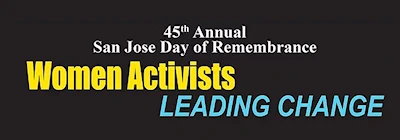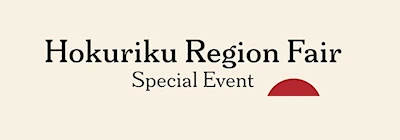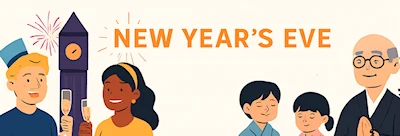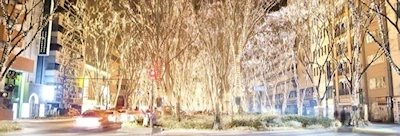Los Angeles Marathon / Dodger Stadium
Event Location
Los Angeles, CA 90012
Runners will be instructed to park near the finish line in Santa Monica on the morning of the race and board shuttle buses bound for the starting line at Dodger Stadium. See below for details on reserving a parking space in Santa Monica and getting to the start.
Parking
http://www.lamarathon.com/runner-info/parking/
History
The Los Angeles Marathon's roots can be traced back to the Games of the XXIII Olympiad, where United States Olympic Committee head Peter Ueberroth introduced a new way to fund and stage large-scale, international sporting events.† The 1984 Games, the second to be hosted by Los Angeles, were a critical and financial success, generating a profit of $223 million and resurrecting the foundering Olympic movement.
Seeking to capitalize on the euphoria and good will generated by the 1984 Olympics, and influenced by the growing popularity of big city marathons held in New York City and Chicago, the Los Angeles City Council sought proposals for staging a marathon.† The City granted William Burke the rights to the race and the inaugural City of Los Angeles Marathon took place on March 9, 1986.† The size of the field, 10,787 registrants (7,581 finishers), was the largest ever for a first-time marathon held on U.S. soil.† The original course featured a loop configuration which started and finished near the historic Memorial Coliseum, the symbolic centerpiece of the 1932 and 1984 Olympic Games.† The winners of the men's and women's open divisions were Americans Ric Sayre (2:12:59) and Nancy Ditz (2:36:27).
The marathon course remained consistent until 1995, though there were some minor adjustments made to the original layout.† In 1996, race organizers introduced a new downtown loop course, which began at the intersection of Figueroa Street and 8th Street and finished at the Los Angeles Central Library near the intersection of Flower Street and 5th Street.† Over the next decade, organizers kept the locations for the start and finish essentially intact, but experimented with different course configurations in a highly publicized effort to produce a sub-2:10 marathon.† The hope was that a faster race record would improve the event's standing in the international running community and attract more registrants.[iii] The plan to create a faster course, which included eliminating a number of existing elevation gains, was successful and in 1999 Kenyan Simon Bor established a new mark of 2:09:25.
Despite Bor's race record, the Los Angeles Marathon struggled to distinguish itself in a distance running racing calendar that grew more and more crowded as there was an increased interest in the sport[iv] (there are now over 500 organized marathons every year[v]).† While other big city marathons such as New York, Chicago, Paris, Berlin and London continued to flourish and began to routinely draw fields in excess of 30,000 participants, the number of registrants in Los Angeles barely eclipsed 20,000.
In 2004, Chicago-based Devine Racing purchased the rights to the marathon.† The new race organizers tweaked the course yet again in an effort to produce still faster winning times, and their efforts were rewarded in 2006 when Kenyan Benson Cherono (2:08:40) and Russian Lidiya Grigoyeva (2:25:10) broke the existing race records.† The 2006 race also broke records for the number of registrants (25,947) and finishers (20,169).
In 2007, race organizers completely overhauled the course layout, turning the Los Angeles Marathon into a point-to-point race which began near Universal Studios in Universal City and concluded at its customary Central Library finish line.† In 2009, the course reverted back to its downtown loop layout.† That same year, the new Pillar-led management team, in an effort to appease religious leaders of churches located near the route who for years had complained that street closures on race day negatively impacted their parishioners' ability to attend Sunday service, changed the start date to Memorial Day on Monday, May 25th.† The date change proved to be problematic as there was a 17% drop in participation, and the Los Angeles City Council quickly agreed to schedule the next race for the following March.
The 2010 silver anniversary edition of the race, and the "Stadium to the Sea" course, marked the first time that parts of the marathon were run outside the city limits of Los Angeles.† While the new course still starts near downtown Los Angeles, it now runs through the eclectic communities of West Hollywood, Beverly Hills, West Los Angeles and Santa Monica.
There are currently 232 Legacy runners who have completed every edition of the Los Angeles Marathon.
Course
The new "Stadium to the Sea" course not only includes a net elevation drop of 430 feet, but it also incorporates many iconic landmarks for which Los Angeles is world renowned.
After circulating around historic Dodger Stadium, the third oldest ballpark in Major League Baseball, the course negotiates past Chinatown and its famous Twin Dragon Towers Gateway, El†Pueblo de Los Angeles State Park, the oldest section of the city, and two of the latest additions to the city's cutting-edge architectural heritage:† the Walt Disney Concert Hall, designed by Frank Gehry, and the Cathedral of Our Lady of Angels, designed by Rafael Moneo.† At mile 6, the course winds through the communities of Echo Park and Silver Lake before linking up to Sunset Boulevard, where it offers runners a picturesque view of the celebrated Hollywood sign.
For the next eight miles, the course guides runners past such other notable Hollywood landmarks as the Walk of Fame, Grauman's Chinese Theatre, the Comedy Store, the House of Blues Sunset Strip and Whiskey A Go Go.† After leaving West Hollywood, the course wends through the heart of Beverly Hills and straight down Rodeo Drive, one of the most affluent, highest profile shopping thoroughfares in the world.
From Beverly Hills, the course continues west to Century City, a commercial and residential district originally developed on land which comprised the backlot for 20th Century Fox studios.† The "Stadium to the Sea" course includes six miles along Historic Route 66, a celebrated national highway that for decades spanned 2,451 miles from Normal, Illinois to Santa Monica, California.† It also traverses through the grounds of the Veterans Administration, a sprawling facility originally founded in 1887 which now houses, among other things, the VA's West Los Angeles Healthcare System.† After leading race participants into the community of Brentwood, the course continues along San Vicente Boulevard, a popular, pedestrian-friendly street which attracts runners of all abilities 365 days a year.† The final three miles of the marathon are set in Santa Monica, where the course eventually runs along scenic bluffs overlooking the Pacific Ocean, and it concludes on Ocean Avenue near the Santa Monica Pier and its stunning solar-powered Ferris wheel.
The Challenge
In 2004, the Los Angeles Marathon introduced a battle of the sexes competition called the "Challenge" to generate more interest in television viewership.† In the "Challenge," the elite women's field was granted a 20:30 head start on the elite men's field.† The first marathoner to cross the finish line would earn a bonus of $50,000.† Russian Tatyana Pozdniakova won the inaugural "Challenge" by beating Kenyan David Kirui by 3:54.† The "Challenge" proved so successful that the amount of the bonus was increased first to $75,000 in 2005 and then to $100,000 in 2006, where it has remained ever since.† Each year the time handicap of the "Challenge" is calculated using the differences in the lifetime best marathon times of the elite women and men participating in the Los Angeles field.† Of the seven "Challenges" to date, a female has crossed the line first on four occasions and a male has crossed the line first on three occasions.† The closest margin of victory in the "Challenge" was 16 seconds in 2006.
Innovation
The Los Angeles Marathon has always had a reputation for being creative and innovative with its race management.
In 1987, six students at East Los Angeles' Boyle Heights High School enrolled in a marathon training program offered by teacher Harry Shabazian.† The Students Run L.A. organization has grown dramatically since its inception, and today thousands of at-risk students from throughout the Los Angeles Unified School District participate in the six month program that promotes physical fitness, discipline and goal setting.† More than 33,000 students have been a part of Students Run L.A. and 90% of them have completed the marathon.
In 1987, race organizers experimented with creating a division for race walking, and in the early 1990's they created a division for inline skating.† While race walkers are still welcome in the marathon in an informal manner, inline skaters were only allowed to compete for one year.
In 1995, race organizers introduced the Los Angeles Bike Tour, a noncompetitive event in which cyclists were permitted to ride along a lengthy portion of the marathon course before the official start of the marathon.† One of the regular participants of the bike tour was former Los Angeles Mayor Richard Riordan.† New management discontinued the bike tour in 2009 to return the focus of race day to the runners.
In 1996, the Los Angeles Marathon was the first major U.S. marathon to adopt field-wide chip timing in which each participant's performance is measured using a transponder and radio receivers located at the strategic points along the course.† Chip timing is now a common feature at most organized marathons.
In 2002, race organizers offered participants the option of wearing personalized bib numbers so that their names would be prominently displayed for spectators viewing the race.† Personalized bib numbers are now a familiar sight at many marathons.
In 2009, the Los Angeles Marathon became the first big city marathon to fully adopt social media outlets such as Facebook, YouTube, RSS, Flickr and Twitter to not just promote the race, but to also allow participants to connect with one another and to be immediately alerted of all marathon-related developments.
Sponsors and Partners
The 2011 Los Angeles Marathon sponsors include Honda, K-Swiss, Emerald Nuts and Don Francisco's.
Quick Facts
- As is the case with most large scale marathons, the Los Angeles Marathon is as much about giving as it is running and since it's inception it has raised over $20 million for various charities throughout the community.
- Boxing great Muhammad Ali served as the honorary race starter for several years between 1989 and 2004.
- 1984 Olympian Joan Benoit Samuelson still holds the record for the fastest women's marathon ever run in Los Angeles (2:24:51) which she accomplished during her gold medal winning performance.
- In addition to the $100,000 "Challenge" bonus, the purse for the 2010 Los Angeles Marathon included $20,000 and a new Honda Insight EX sedan for the top male and female finishers.† Various bonuses are also awarded to runners who meet certain pre-determined time standards.
- The most decorated performer in Los Angeles Marathon history is Mexican Saul Mendoza who has won the Wheelchair Division seven times.
- The LA Marathon Expo, staged at Dodger Stadium on the Friday and Saturday before marathon day, is one of the largest road racing expositions in the world.
- A 5K run/walk, a fixture on marathon weekend since 1990, draws in excess of 4,000 participants every year.
- Notable entertainment personalities who have participated in the Los Angeles Marathon include Freddie Prinze Jr., Shia Labeouf, Gordon Ramsay, David James Elliot and Allison Iraheta.
Authentic Japanese Gardens (United States)
Best Japanese Gardens
Japanese Rock 'Zen' Gardens (United States)
Best Japanese Rock 'Zen' Gardens
Japanese Teahouses (United States)
Best Japanese Teahouses
Japanese Museum Art
Japanese Museums   Map of Japanese Museums

















